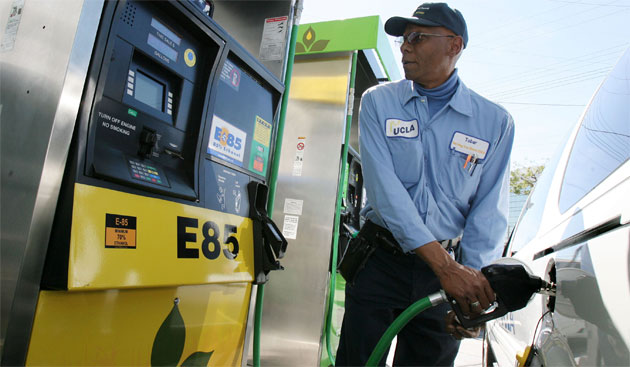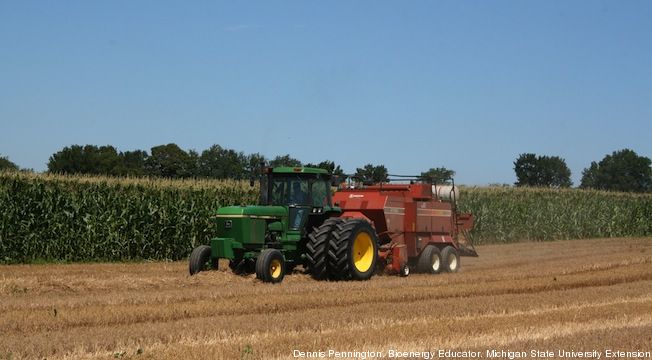Back in 2007, ethanol was viewed as a way to cut gasoline consumption and U.S. dependence on foreign oil.
It was then seen as such a panacea that Congress enacted volume requirements for the amount of ethanol in U.S. gasoline stretching all the way to 2025.
But times change.
ALSO SEE: Proposal: Buy Out, Shut Down U.S. Coal Industry For $50 Billion
Today, about 2 percent of all public fueling stations offer E85--a blend of 85 percent ethanol and 15 percent gasoline--which can be used in roughly 5 percent of the U.S. light-duty vehicle fleet that is compatible with the alcohol fuel.
There does not appear to be data available, however, on whether those "Flex-Fuel" vehicles actually do ever fuel up with E85, instead of regular gasoline.

E85 station in Los Angeles
According to the latest data from the U.S. Energy Information Administration (EIA), the number of fueling stations offering E85 is continuing to grow, but at a slower rate than over the past few years.
The most recent tally last year puts the number of E85 stations at 2,639, against 1,229 in 2007, the earliest year for which state-level data is available.However, most of that growth occurred between 2007 and 2011, by which time there were 2,442 stations.
So while the number of stations almost doubled during that period, it only increased by 7 percent between 2011 and 2013.
While growth has slowed, the network of stations has become less concentrated.
E85 has always been most popular in the corn-growing states of the Midwest, but it's now easier to obtain in other parts of the country.

Big square baler harvesting wheat straw for production of cellulosic ethanol
While Minnesota still has the most E85 stations--336 according to the EIA--California, Colorado, Georgia, New York, and Texas have experienced significant growth.
DON'T MISS: 2015 BMW i8 Production Starts, Final Specs Released For Plug-In Hybrid Supercar
This is particularly true of California and New York, which had fewer than a dozen stations combined in 2007, but now have around 80 stations apiece.
In addition, the number of states without any E85 fueling stations fell from nine to two during the same period. As of last year, the only holdouts are Alaska and New Hampshire.
Consequently, the Midwest's share of total E85 stations fell from 54 percent in 2007 to 36 percent in 2013.
More stations in more states will benefit the small percentage of drivers in vehicles that can use E85.
But, as a fraction of the roughly 156,000 gas stations currently operating in the U.S., they're still just a drop in the proverbial bucket.
Meanwhile, we'd like to see some data on how many drivers of Flex-Fuel vehicles actually do use E85 at all--and if so, how often.
_______________________________________________












